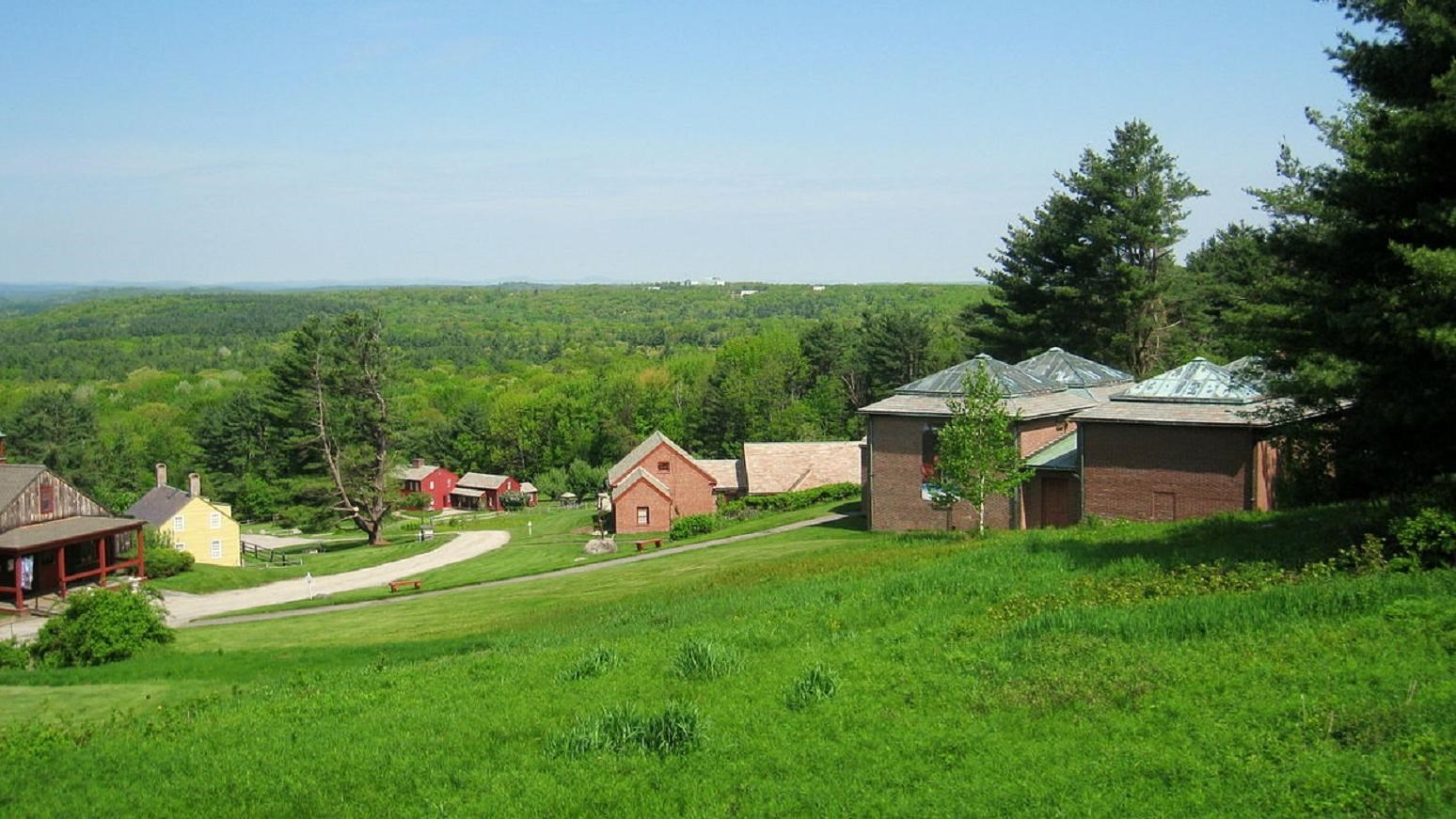Last updated: July 8, 2020
Place
Fruitlands Museum Historic District

By Daderot, Public Domain, https://commons.wikimedia.org/w/index.php?curid=6801452
Assembled by early preservationist Clara Endicott Sears beginning in 1843, Fruitlands Museum Historic District is a landscape and four museums in Harvard, Massachusetts, 45 miles west of Boston. The Fruitlands Museum Historic District represents the intersection of historic preservation and natural conservation.
Many individuals, not just writers and philosophers, dedicated their lives to the conservation of natural landscapes and the principles described by Henry David Thoreau, Ralph Waldo Emerson, and others throughout the state. The district is a testament to the variety of people who participated in the Massachusetts conservation movement.
The first property Sears purchased was Fruitlands, the site of Bronson Alcott’s “New Eden,” an experimental utopian community modeled on the ideas of the Transcendentalist movement. The community sought to create a new Eden by cultivating an ascetic way of life: purchasing nothing from the outside world and living solely off the land. The proximity of the community to Concord and its adherence to Transcendentalist ideas brought important visitors including Nathaniel Hawthorne, Henry David Thoreau, and Ralph Waldo Emerson, who was especially impressed by the community. He wrote, “The sun and evening sky do not look calmer than Alcott and his family at Fruitlands. They seem to have arrived at the fact, to have got rid of the show and be serene.” Though the community ultimately failed, its creation highlights the popularity of conservation ideals among ordinary citizens in small communities throughout Massachusetts. Fruitlands has been designated a National Historic Landmark.
The Shaker Office, Native American Gallery, and Fine Art Gallery comprise the remaining buildings at Fruitlands. The Shaker Office Building came from the Shaker community in Harvard, Massachusetts. Sears moved the building to the Fruitlands when asked by the village to preserve their first office. She restored it and opened it to the public. The discovery of evidence of Native American activities in her fields led to the creation and eventual expansion of a new museum dedicated to Native American artifacts. Sears’ final addition to her museum was the Picture Gallery for her collection of "primitive" and itinerant painters.
The ideals of living in harmony with nature can be found in all four of Sears' museums and their exhibits. Native American artifacts attest to the natural lifestyle advocated by the Massachusetts Conservation Movement. Bronson Alcott’s utopian community and the Shakers both reflect ideas of agrarian communal living in harmony with the land. The Picture Gallery, with its fine collection of Hudson River School paintings, provides direct connection to the American conservation movement. Paintings by several noted artists, including Albert Bierstadt, Frederic Edwin Church, Jasper Cropsey, Asher Brown Durand, Sanford Robinson Gifford, John Frederick Kensett, and others, convey the beauty in American wilderness that helped inspire efforts by the American public to preserve it.
The Fruitlands landscape itself attests to conservation as evolving ideas of living gently on the land. Arrowheads found on the property demonstrate a time when Native Americans lived by hunting and gathering here. Preservation of the landscape as an outdoor museum combines both historic preservation and conservation. Today visitors can explore the Fruitlands landscape by following several trails through the property. Stone walls and other artifacts indicate the former uses of the property. As a large tract of preserved land, the Fruitlands landscape also provides ecological habitat for several species.
The Fruitlands Museum Historic District is located about 45 minutes west of Boston at 102 Prospect Hill Rd., just off Route 2, exit 38, in Harvard, MA. Fruitlands itself has been designated a National Historic Landmark, while the entire Fruitlands Historic District is listed in the National Register of Historic Places. There is a fee for admission. For information on days and hours the grounds and buildings are open, which vary seasonally, visit the Fruitlands Museum website.
To discover more Massachusetts history and culture, visit the Massachusetts Conservation Travel Itinerary website.
